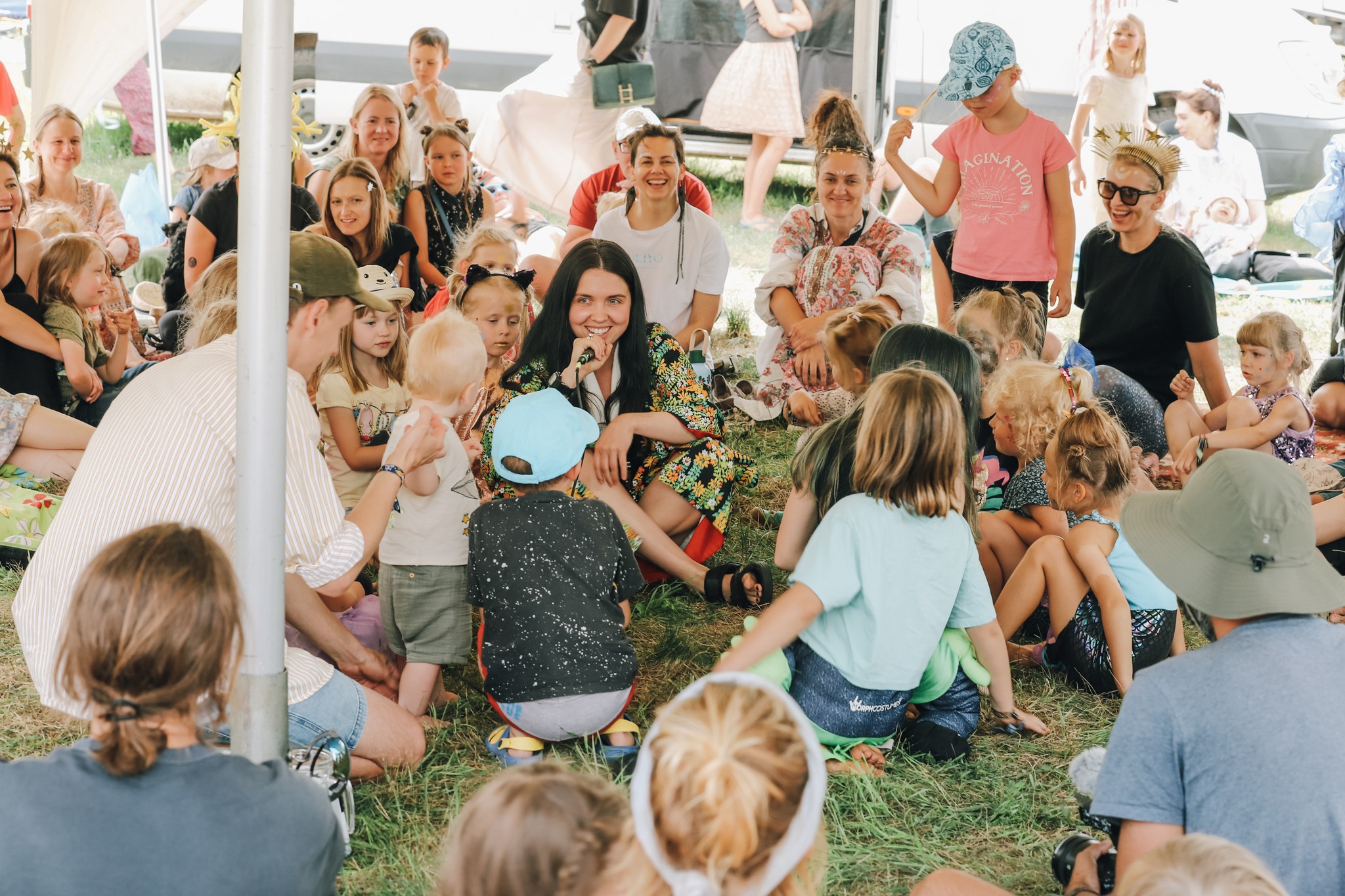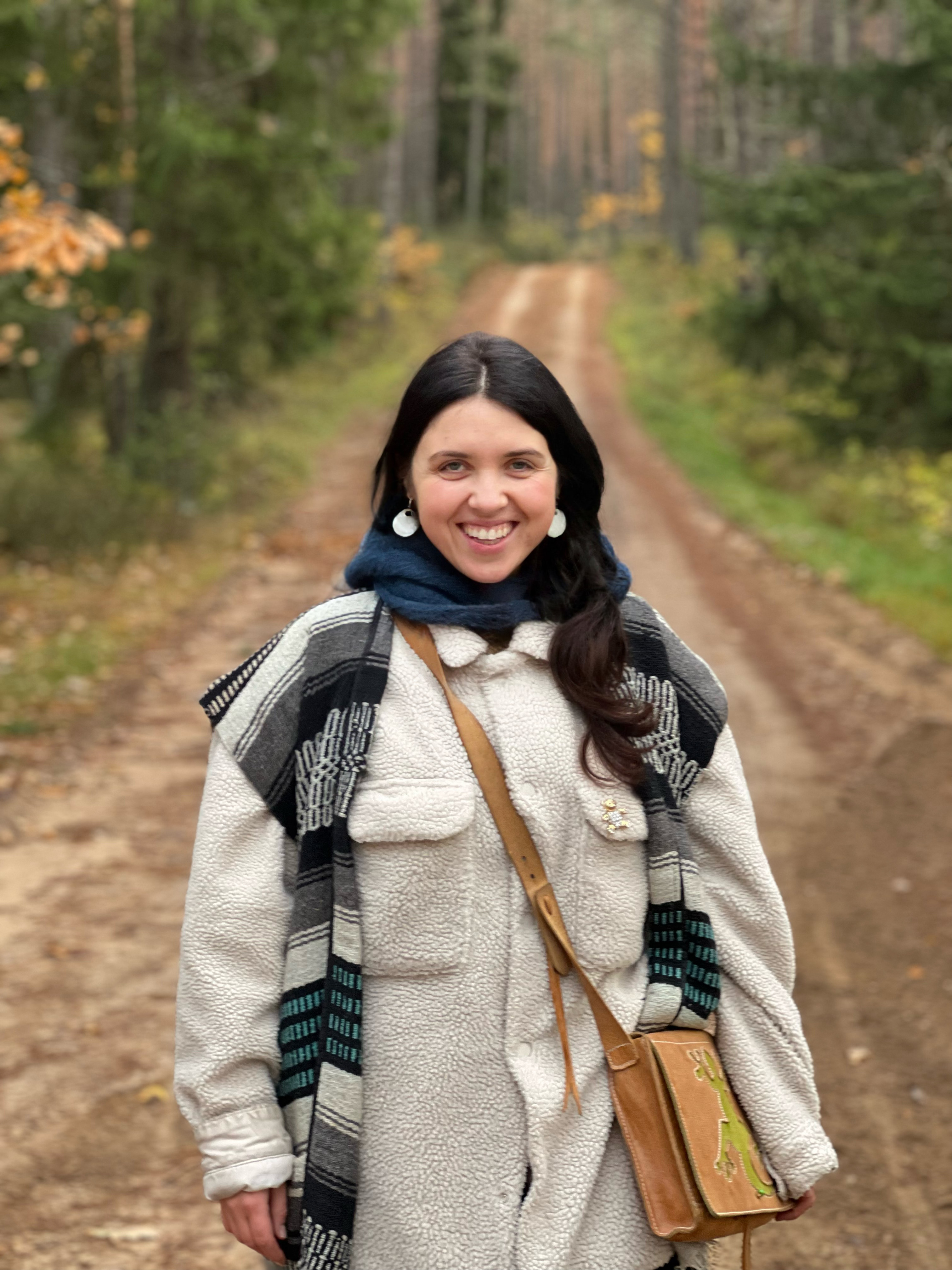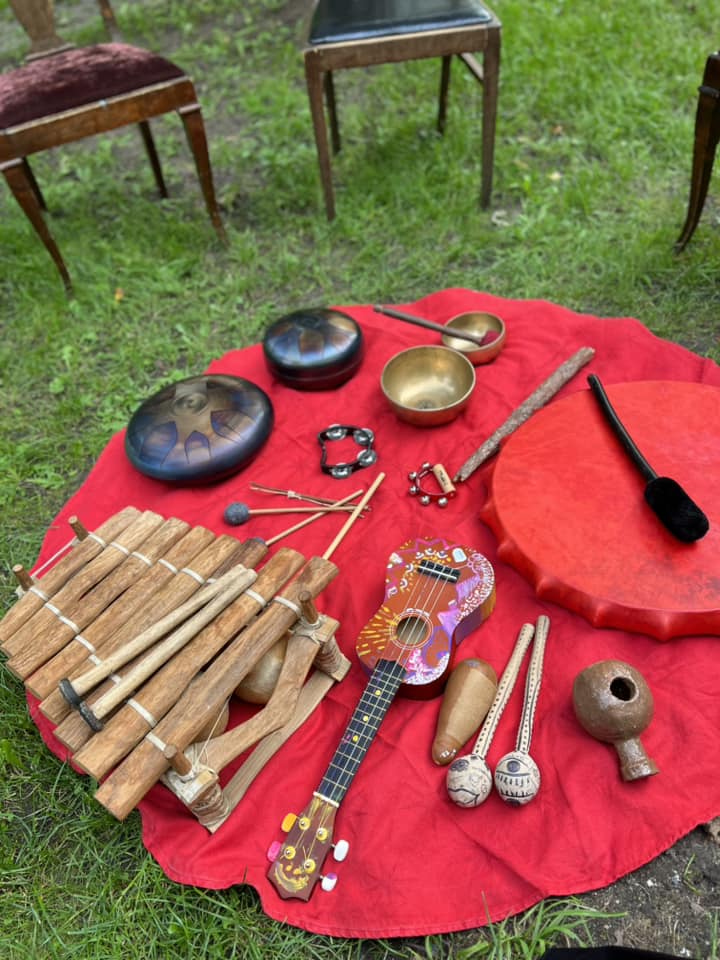Music Therapy Student Miglė Vilčiauskaitė-Migloko: We All Have an Ear for Music

“Music therapy can help in a wide range of situations. The most important thing is to find out what relationship the person who is to be treated, has with music, i.e. what their tastes in music are, what they would like to play, what music talks to them and to accompany them on an authentic path of music healing,” explained Miglė Vilčiauskaitė (also known by her stage name Migloko), a master’s degree student in the Joint Music Therapy programme of the Faculty of Medicine at Vilnius University and the Lithuanian Academy of Music and Theatre. On the occasion of the European Music Therapy Day on 15 November, based on her personal experience, Miglė agreed to tell us what music therapy is, who can benefit from it, how the sessions are conducted and many other interesting things.
The path to music therapy studies
Miglė, a musician, composer, singer and performer, started taking singing lessons when she was just four years old. She knew from her mother’s and father’s stories that when she would be taken to the park for her lunchtime nap at the age of six months, she loved to whistle. “So one can say I’ve been in music since the sixth month of my life,” she joked. Miglė studied music production and performing arts in the Netherlands, and chose the Joint Music Therapy study programme because she felt that it offered a very progressive space for learning and development.
“The master’s degree programme in Music Therapy is a very rigorous learning programme. Lectures are hybrid – both face-to-face and distance learning sessions. Of course, I prefer to come to the faculty and listen to live lectures. It’s great to attend seminars, the more the merrier! It is a two-year study programme. Lecturers are friendly, caring and always willing to share their precious knowledge and experience. We have a lot of fantastic literature and extremely interesting documentaries available to draw inspiration and knowledge from,” Miglė explained. The study programme includes the study of biopsychosocial health, clinical music improvisation, clinical psychology, the history of music therapy, neurology, rehabilitation, psychiatry and other subjects related to the specialism.
According to Miglė, music therapists are sensitive, empathetic and creative people. “Music therapy came into my life very organically, perhaps it was even fate. People who have listened to my compositions, both live and virtually, have always shared stories about how it has affected them. For example, someone had a headache and felt better after my concerts. Or they felt anxious, psychologically distressed, and only after listening to my music, dancing or singing to it, did they feel more relaxed, more free. Such positive feedback from listeners brought me to the music therapy world.”

A therapist’s relationship with the client is key
According to Miglė Vilčiauskaitė, music therapy is a creative tool for prevention and support, encompassing many therapeutic models, and designed to improve both physical and psychological health. “The nature and content of music therapy sessions depend on the area of expertise of the therapist and the social group in which the therapist works. If the music therapist has chosen to combine, for example, C.G. Jung’s existential therapy and musical tools, the sessions may resemble the more traditional sessions with a psychotherapist. However, it is very important to emphasise that music making becomes the main communication tool between the therapist and the client or patient during music therapy sessions.”
Miglė works mainly with voice training, song writing and musical improvisation, and her clients can choose which musical instruments they would like to try. “The nature and frequency of music therapy sessions depends on the personal needs of each client. There is not really a one-size-fits-all prescription, everything is very individual, each person has their own story and needs – so before we start working with a client, we have to find out exactly what those needs are.”
Training as a music therapist certainly does not end with a diploma. As a professional, a music therapist needs to continuously study, train and gain knowledge and experience. Each case in music therapy is individual, and each social group and its needs are unique. “We never know what the next social group in music therapy will be. Of course, during our studies we have to choose a social group and study it in a targeted way, but even after completion of our studies learning doesn't stop. The field of music therapy is so broad, so encompassing, that you can really study for a lifetime. I am usually approached by girls and women who want to free their voices, to heal both in body and in spirit through singing, and to clarify their needs through creativity, to train their imagination and spontaneity through improvisation. In South America, there is a popular term medicine music, i.e. healing music. I really like to think of music therapy in this way,” Miglė said. After studying music therapy, Miglė said she would like to go deeper into existential therapy and how the two therapies might be combined in practice.

No musical background is required
Miglė said that she often has to deal with clients full of self-doubt: they think they are not sufficiently musical, they are afraid of just trying to sing or play, and express themselves through music. According to Miglė, there is no such thing as “not sufficiently musical”, and music therapy sessions are open to everyone. “Musicality is not about talent or about being some sort of chosen one. We are all musical by nature. As early as in the 18th week in the womb, when the baby’s entire auditory system is being formed, we start to hear low-frequency sounds, and we move in the amniotic fluid according to the rhythm of our mother’s heartbeat. People who are deaf also hear music through its vibrations and rhythm. They hear with their bodies. Ears and hearing are not always necessary to feel and perceive music. I always tell my students and clients: we are all musical. Our Stone Age ancestors made music by imitating the sounds of nature and animals. Musicality is written in our evolutionary memory,” Miglė concluded.